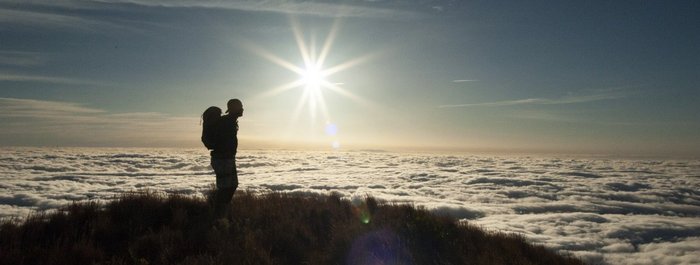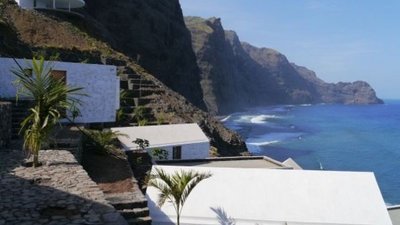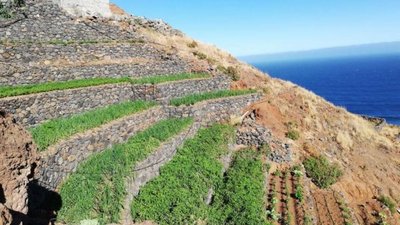Climate, Climate Change & Weather on Cape Verde




Climate change is not just a modern phenomenon, changes in climate always existed, alternating between ice ages and warm periods. These "pre-industrial" temperature changes happened slowly enough for the earth to get used to it.
With the man made climate change, it is completely different and more dramatic. Our "species" is constantly growing. We need more and more resources and we are interfering in the ecosystems in ever more extreme ways. The earth is warming up within a very short time with devastating effects: Ecosystems are becoming unbalanced, weather extremes and natural disasters such as drought, heat, storms and heavy rain are claiming human lives, and natural resources such as fresh water are becoming increasingly tight.
AFRICA IS HEATING FASTER THAN THE GLOBAL AVERAGE
The consequences of global warming are visible worldwide and real – according to the IPCC (Intergovernmental Panel on Climate Change). Africa is the continent most threatened by climate change. According to model calculations, climate change will hit particularly the coastal region of West Africa.
Unlike industrialised countries, African countries cannot adequately prepare for rising temperatures; they lack capacities, resources and the technical "know-how" – although the African continent has so far contributed only about 3% of CO2 emissions. And, thus bears the least responsibility for climate change; this part of the world is facing many challenges. Heat records and droughts on the one hand, and extreme rainfall and flooding on the other, are exacerbating the problems of water supply.
CLIMATE CHANGE IN CAPE VERDE: "IT'S TIME TO RETHINK"
As a small island nation off the west coast of Africa, the Cape Verde Islands face special challenges. The climate on the archipelago is mainly determined by the north-east trade winds and by foothills of the Sahel. Since the 1950s, a decline in precipitation and its instability have led to dramatic changes in the local flora and to the necessary adaptation of crops and their cultivation areas. In the past, droughts claimed human lives. This means that nowadays, emergency slaughters take place in some years because there is no longer enough food for the animals due to the lack of rainfall.
On Santo Antão, for example, the most northern island of Cape Verde, the main traditional occupations are agriculture and fishing. The most devastating effects of climate change, especially the issue of water scarcity on the "green island" Santo Antão, are described by agricultural economist Sergio Ramos in an interview: "On average, it rains every five years. The rainy season in Cape Verde is getting shorter and shifts seasonally. The rainfall is much more intense, which leads to crop damage and crop failures. New technologies in irrigation systems have to be invested in, new crops must be tested, harvest storage systems have to be rethought – these are challenges for a small island nation that cannot be managed without help from industrialised countries," he reports.
Read the full interview with Sergio Ramos after the heavy rain in September 2020 here: RAIN. RAIN.FINALLY RAIN.



THEIR SURVIVAL DEPENDS ON IT...
One of the most prominent visitors on Cape Verde is the caretta caretta, the loggerhead turtle. The sea turtles arrives in Cape Verde every year between July and November to lay its eggs. The beaches of the Cape Verde Islands are one of the largest breeding colonies for this species in the world.
In the days following the egg-laying, the ambient temperature determines the sex of the offspring. From 31°C and above they become females, below they become males. For the turtle population, global warming means that the female portion of the hatchlings will massively outnumber the male portion and thus they will not find enough mates for fertilisation in the long-term.
Due to the rapid development of mass tourism on the sandy islands of Sal and Boa Vista and the traditional demand for their eggs and meat, sea turtles on Cape Verde are highly endangered.
vista verde tours supports the "Turtle Foundation", a local conservation organisation (www.turtle-foundation.org), in the protection of these sea creatures.
WORKING TOGETHER FOR CLIMATE PROTECTION: RENEWABLE ENERGY PRODUCTION
As an island nation in the Atlantic Ocean, the Cape Verde Islands bear an enormous potential for the use of renewable energies. Water, wind and sun are available (almost) 365 days a year. An envisaged energy turnaround on the islands should extremely reduce or, ideally, end the dependence and the current 100% import of expensive diesel imports. With even greater support, the help and commitment of foreign investors, Cape Verde could become a model example in Africa.
The state already provides financial support for the import of renewable energy technologies in order to promote the energy transition. Investments in this area and the use of renewable energies are steadily increasing. The big challenge will be the lack of technical know-how for maintenance, rather than the investment itself.
A "lighthouse" project is currently being implemented on Santo Antão. The Mamiwata ECO VILLAGE has 14 rooms and four holiday homes as well as a photovoltaic system, its own well, a grey water system to treat waste water and its own vegetable cultivation.
Mamiwata ECO VILLAGE on Santo Antão
Cape Verde's unique eco-hotel with spectacular views over the sea, built on rocks directly above the ocean, tries to be as self-sufficient as possible. The grey water is naturally filtered and reused to irrigate the gardens.
https://www.mamiwata-ecovillage.com/




